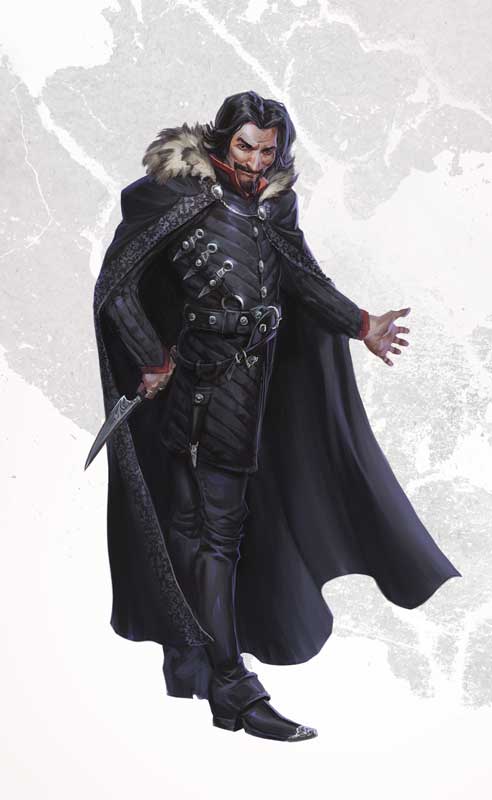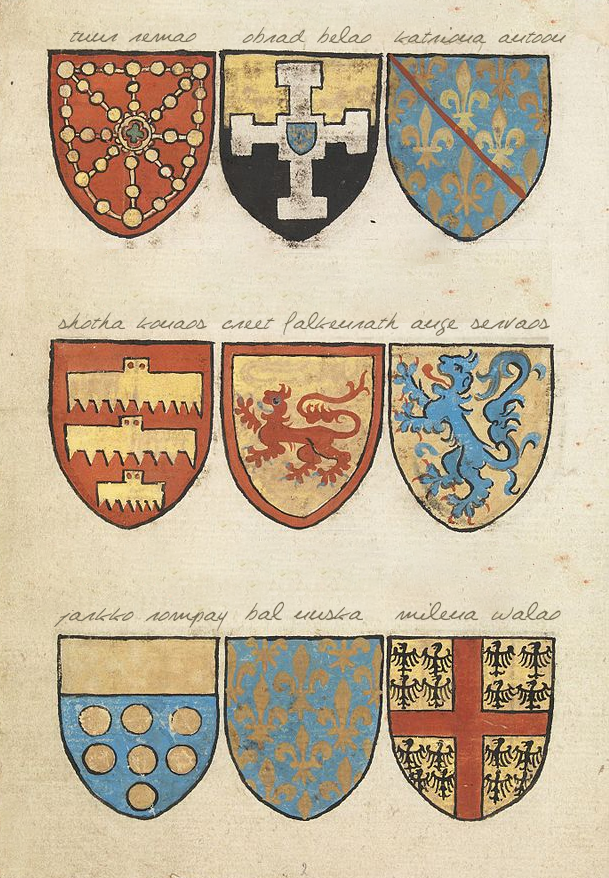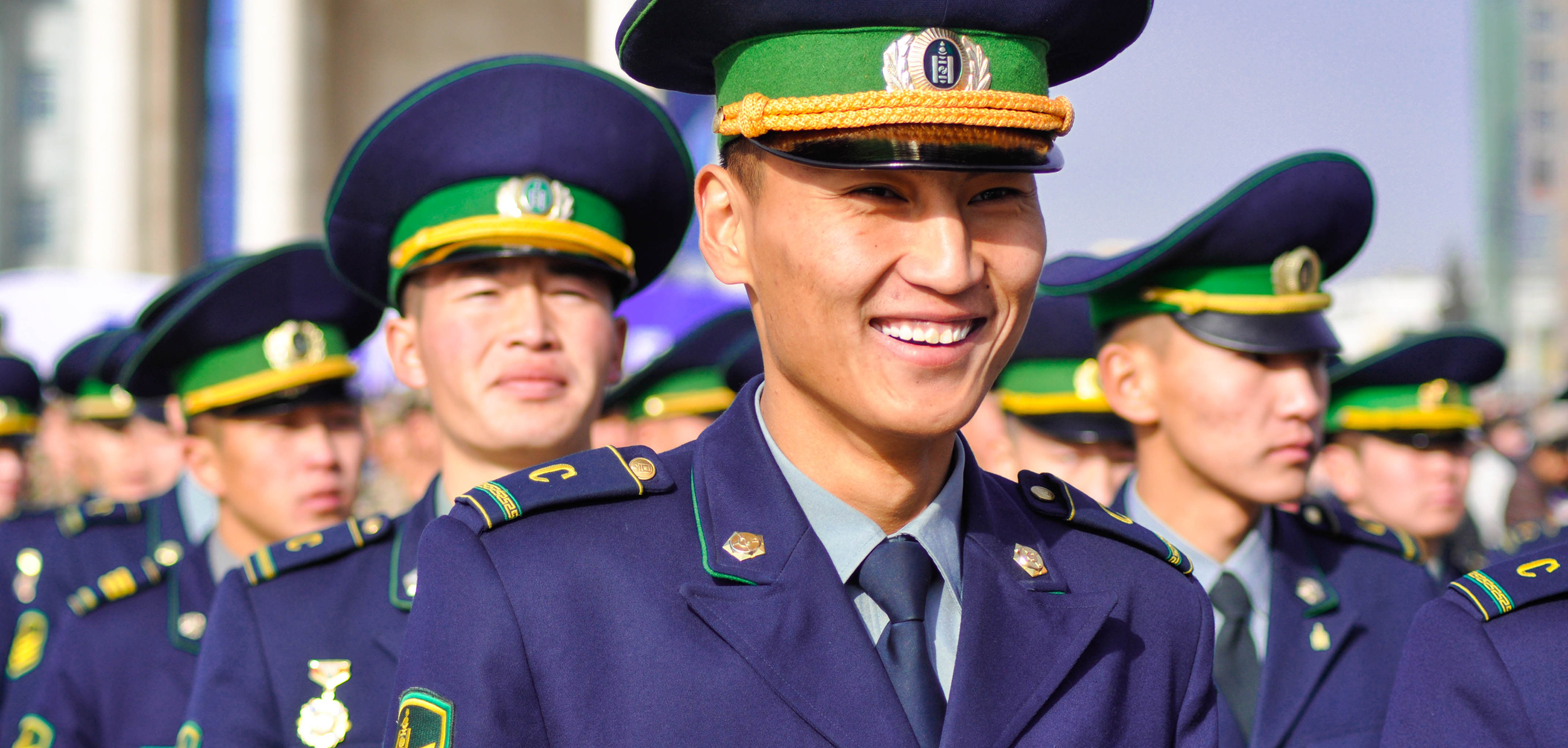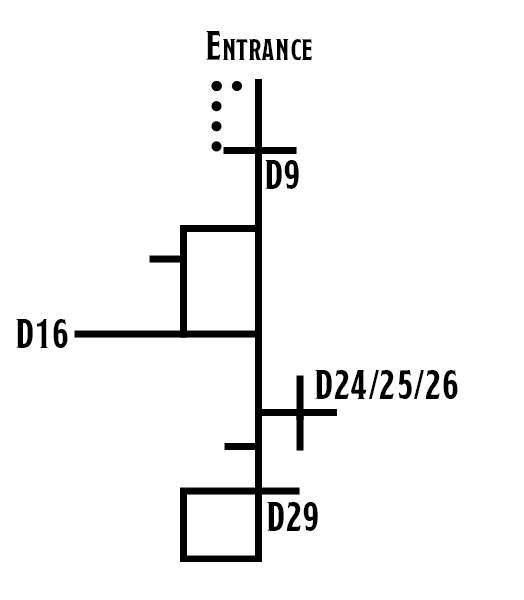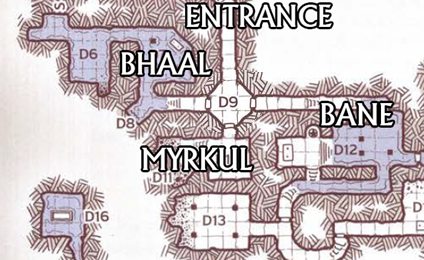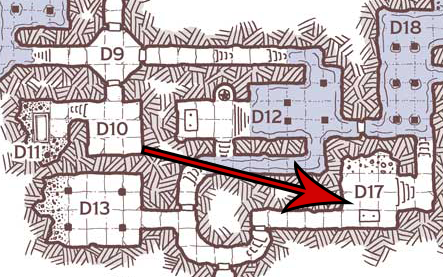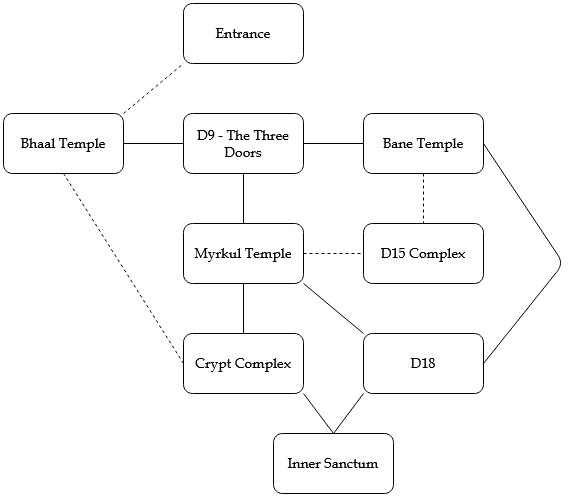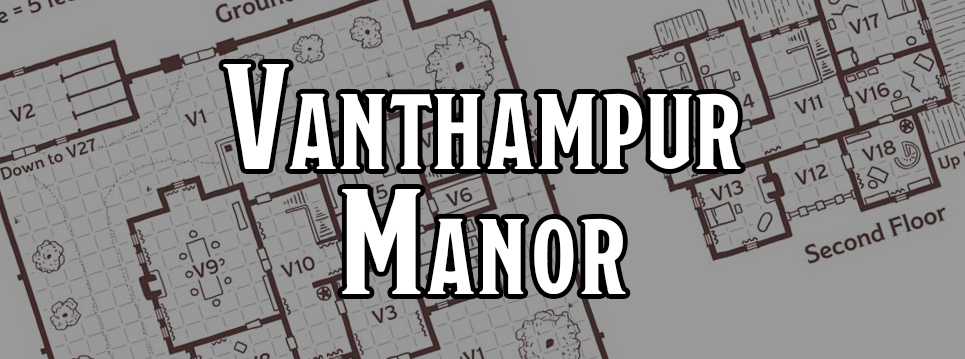
Compared to the Dungeon of the Dead Three, we’re going to have a fairly light touch on Vanthampur Manor. For the most part, we’ll just be tying off some of the loose ends created while we were remixing other scenarios in Part 3, with a particular look at how this effects the various denizens of the manor.
MANOR vs. VILLA: The published book refers to this location as Vanthampur Villa, but I’ve changed it to Vanthampur Manor. Why?
Short version: Waterdeep has villas. Baldur’s Gate has manors.
Feels like a minor thing (and I get the appeal of the alliteration), but this is actually baked pretty deep into Baldur’s Gate, which features things like the Manor Gate, which leads to the Manorborn neighborhood, which is filled with the Patriar Manors.
The other option would be to push strongly in the opposite direction and have the fact that the Vanthampurs own a “villa” instead of a “manor” be a commentary on how Thalamra Vanthampur wasn’t born into privilege (she wasn’t “manorborn”) and is instead a self-made woman. But (a) that’s a theme which would require a lot of extra work to meaningfully bring forward in the adventure and (b) I’m not really that interested in a theme that boils down to “the real problem with Baldur’s Gate is not the entrenched greed of its upper class, it’s the low-class upstarts trying to rise above their station.”
Also, minor though it may be, this does seem to subliminally draw a distinction between the noble culture of Waterdeep and the noble culture of Baldur’s Gate that I think helps to distinguish the two cities, particularly if you just recently got done running Waterdeep: Dragon Heist for your players.
THAVIUS KREEG: Thavius Kreeg’s role in the manor is largely unchanged, but it may be useful to remember, as we discussed at the beginning of Part 3, that there are some substantial contradictions and problems with Kreeg’s back story. We’ll be straightening those out in Part 4B of the Remix, but the changes should be kept in mind here.
I also recommend dropping the whole “Kreeg has the shadow of a pudgy devil” thing:
- It’s a cool concept, but it doesn’t really make sense. (Why him and none of the other cultists?)
- If it works as intended (the PCs immediately realize he’s evil), I think that’s less interesting than having ambiguity and the PCs either (a) figuring it out or (b) getting gulled.
- But I think there’s a pretty big risk it WON’T work as intended and the PCs, instead of concluding that Thavius Kreeg is evil, will conclude that this ISN’T Thavius Kreeg and is actually a devil in disguise. This will thoroughly muddy a fairly key revelation.
- If you still have Reya Mantlemorn involved, this detail is simultaneously scripted to be painfully obvious to the PCs and, for some reason, completely irrelevant to Mantlemorn. (“His altered shadow is not damning enough evidence.”) This is likely to result in a really frustrating interaction.
As I was typing this up, I think I figured out where we can repurpose this cool idea.
THE TRUTH OF ELTUREL’S FALL: Duke Vanthampur, High Observer Kreeg, and Gargauth all know the truth of what happened to Elturel (it was taken to Hell). Everyone else in the manor (who know anything about the cult’s business at all) are under the impression that devils under the command of Zariel laid siege to the city and destroyed it. They believe that their unholy mission is to similarly prepare Baldur’s Gate for Zariel’s scourge.
Even Vanthampur, Kreeg, and Gargauth will not readily give up the truth. All three of them will, instead, lie obliquely, by referring to “Elturel’s Fall.” If they’re pushed on the point (if caught in a zone of truth, for example), they’ll talk about how the legions of Zariel “fell upon the city” (and similar euphemisms and half-truths).
The dramatic goal here is for the players to NOT know Elturel’s true fate until the infernal puzzlebox is opened in Candlekeep. This is not absolutely essential (so if the PCs get clever or are particularly efficacious in hammering in on this point, there’s no problem in letting them get the truth out of one of the NPCs), but you will get a MUCH bigger impact from the puzzlebox if that’s the moment that the PCs discover the truth of Elturel’s fall.
RAID, HEIST, OR CRAWL? As written, Vanthampur Manor is largely designed to function as a dungeoncrawl, although adroit players might be able to turn at least the first part into a raid. The Remix, however, does open up the possibility of approaching the whole thing into a heist.
Let’s take a second to distinguish these three concepts: A dungeoncrawl features a room-and-key design which the PCs largely explore blind. A raid is similarly based on a room-and-key design, but the locations is designed so that the PCs can grok the entire floorplan and some (or all) of its defensive measures. A heist is similar to a raid, but the floorplan and defenses can’t be easily observed, so there are additional phases of play in which that information must be gathered. (It’s also fairly typical for a heist to be focused on achieving a specific goal while minimizing open conflict, whereas raids are often about planning a full-out assault with the goal of tactically clearing the location. But there can be a lot of overlap here.)
Check out Scenario Structure Challenge: Raiding the Death Star and Scenario Structure Challenge: Heists for a more detailed overview of these structures.
The opposition in Vanthampur Manor isn’t so overwhelming that the PCs can’t just kick down the front door and start clearing the place room by room: That’s what I mean when I say it’s designed as a dungeoncrawl.
However, it takes no significant effort to carefully observe the manor house itself and figure out the layout of the first and second floor, the location (and patrols) of guards, etc. So this first chunk of the scenario can easily operate as a raid (with smart PCs who take this course of action likely benefiting from their planning) up to the point where they find the entrance to the dungeon lair below, at which point they’ll have to descend into the unknown.
The Remix, however, creates the opportunity to approach Vanthampur Manor as a heist, with the PCs likely planning to either steal the infernal puzzlebox, kill the Vanthampurs, or both. To briefly review the five steps of the heist:
- Identify the score.
- Gather information.
- Onsite surveillance.
- Prep work.
- The Operation.
There are enough cultists and associates of the Vanthampurs wandering around this section of the campaign that PCs will almost certainly be able to grill them for information about the manor. Pursuing official records might also give them the layout of the manor, and the records of the Master of Drains and Underways could reveal that Duke Vanthampur had the sewers under her mansion sealed off and redirected. (The latter could carry some risk, however, as Duke Vanthampur was once the Master of Drains and Underways and the department still remains under her thumb.)
Onsite surveillance opportunities are trickier to imagine: Arranging a meeting with Thurstwell Vanthampur (after he contacts them via imp) might offer an opportunity, though. (Or could simply serve as the opportunity for the heist itself.)
It is important to note that this is not a choice you need to make as the DM. Or should make. Step back and let the players figure out how they want to approach the manor, and then follow their lead.
ADVERSARY ROSTER
| MANOR HOUSE | ||
| 3 x 3 Guards | V1. Yard | (patrolling counter-clockwise) |
| Groundskeeper Sarvinder Peck (01-75%) | V2. Stable House | |
| 4 imps | V3. Foyer | (invisible) |
| Gray, Peck, D'Vaelan, Fallwater (76-00%) | V4. Servants' Quarters | (resting or sleeping here) |
| Cook Gabourey D'Vaelan | V5. Kitchen | |
| Duke Vanthampur (01-05%) | V8. Parlor | |
| Butler Fendrick Gray (01-75%) | V10. Gallery | |
| 5 Guards | V11. Upstairs Hall | |
| Thurstwell Vanthampur | V13. Thurstwell's Bedroom | |
| Duke Vanthampur (06-10%) | V16, V17, or V18. Master Suite | (50% sleeping) |
| Helmed Horror | V18. Duke's Study | (must be summoned by Vanthampur) |
| 2 imps | V19. Tower Peak | (invisible) |
| DUNGEON | ||
| 3 spined devils | V20. Cellar | (ordered to guard this chamber) |
| 3 x 2 Cultists | V22. Sewer Tunnels | (patrolling counter-clockwise) |
| 1d4 cultists (50%) | V24. Dining Room | (subtract from V33) |
| Barbed Devil + 4 Cultists | V26. Temple of Zariel | |
| Duke Vanthampur (11-25%) | V26. Temple of Zariel | |
| Duke Vanthampur (26-00%) | V28. Secret Shrine | |
| Bearded Devil | V29. Prison | (ordered to guard prisoners) |
| 2 cultists | V32. Connecting Tunnel | |
| 6 cultists | V33. Cultists' Quarters | |
| 1d3-1 cultists | V34. Ritual Chamber | (subtract from V33) |
| Thavius Kreeg | V36. Vanthampur Vault | (unlikely to leave sanctuary) |
RANDOM ENCOUNTERS – MANOR:
- 1 in 10 chance that Amrik is unexpectedly visiting during the day.
- 1 in 20 chance that Mortlock is unexpectedly visiting during the day.
- 1 in 6 chance per room that Slobberchops (DIA, p. 34) is there.
- 1 in 10 chance per room of encountering an imp.
- If not in V4. Servants’ Quarters, randomly determine Maid Ambra Fallwater’s by rolling 1d20.
SCHEDULE: Vanthampurs all gather for dinner (V9. Dining Room) once per tenday.
PRISONERS & ENEMIES OF VANTHAMPUR
There are several friendly characters in (and around) Vanthampur Manor that need to be tweaked slightly. Most of these are prisoners being held by the Vanthampurs.
REYA MANTLEMORN: As previously discussed, having Reya Mantlemorn tell the PCs that Thavius Kreeg is alive (instead of having the PCs discover that for themselves) is a bad choice. So if you still want Reya to show up, you need a different explanation. Fortunately, this is pretty simply: Reya knows that the devils of Avernus were responsible for the fall of Elturel. There’s nothing she can do for lost Elturel (particularly since she believes it destroyed), but she’ll honor her oaths as a Hellrider by seeking vengeance: Following her own leads, she’s discovered that the Vanthampurs are part of some sort of Zariel cult. (This will almost certainly not be news to the PCs at this point.) She wants to break into the manor to continue her investigation (and probably kill the Vanthampurs and any other cultists inside).
Option: If you don’t want to run Reya as a GMPC here, but do like the idea of her investigating the Vanthampurs, you can split the difference by having her locked up in Area V19. She investigated, she came, she got caught, she got locked up. Duke Vanthampur is trying to figure out how to safely ship her to the Poisoned Poseidon to be murdered.
FALASTER FISK: In the adventure as written, Falaster Fisk tells the PCs to take the infernal puzzlebox to Sylvira Savikas in Candlekeep to have it opened. He also, for some godforsaken reason, tells them exactly what’s in it before they do so. As with Reya, the adventure is shooting itself in the foot by needlessly deprotagonizing the PCs.
So what is Fisk doing here? This only requires a slight adjustment: Sylvira Savikas, like Reya Mantlemorn, followed independent leads and came to suspect that Duke Vanthampur is secretly a Zarielite. She sent Fisk to investigate. He got into the manor by pretending to interview for the recently vacant housekeeper position (DIA, p. 33), but got careless and was caught. Duke Vanthampur is still trying to get him to confess who sent him and how much they know.
If Falaster sees the infernal puzzlebox, he’ll recognize it for what it is as a result of his work with Sylvira. He’ll still recommend that the PCs take it to her in Candlekeep: She’s an expert in such devices and will know how to safely open it. (He can also warn them of the disastrous psychic consequences of a failed attempt to open it.)
SATIIR THIONE-HHUNE: Satiir Thion-Hhune is described in Descent Into Avernus as a seventy-year-old aristocratic human woman. My brain somehow parsed that as seventeen-year-old, and I ended up picturing her as basically a young Claudia Christian:

It’s a strong visual image, so it’s probably going to stick for me. (The seventy-year-old Satiir can be her grandmother.) As previously discussed in Part 3F, she was kidnapped by Bhaal cultists who were looting a Hhune treasury and taken to the Dungeon of the Dead Three, then transferred to Vanthampur Manor to be used as political leverage against the Hhune family when Vanthampur makes her move to become Grand Duke.
I put in some effort to untangle the Hhune family lore, but largely gave up when it became clear the effort involved was probably not worth it for what will almost certainly be a very minor character (see “Design Notes,” below, if you’re interested in taking up the project). The one important thing to note is that the Hhune family were once (and possibly still are) part of the inner cabal of the Knights of the Shield that venerated the Shield of the Hidden Lord and knew its true identity (see “Lore of Gargauth” in Part 3B of the Remix). This means that Satiir is likely to recognize the Shield of the Hidden Lord. This could take several forms:
- She could be a true believer and member of the inner cabal. As a Gargauth cultist, she’ll know the Shield of the Hidden Lord for what it is. She will either attempt to convince the PCs that the Shield was stolen from the Hhune treasury so that they will “return” it to her, or she’ll report back to her family that the PCs have it (and the family will send Knights of the Shield to take it).
- She could be a true believer and NOT a member of the inner cabal. She’ll recognize the shield from its depictions, but believe that it’s the Shield of Silvam. (Possibly to similar effect as the above. Or maybe she just fan-girls over it, misleading the PCs as to its true identity. Gargauth will happily play into being a stolen royal relic.)
- In either of the scenarios above, Gargauth might telepathically communicate with Satiir and prompt her to similar (or different) effect according to his current agenda.
- For something completely different, Satiir could be a rebellious teenager who’s familiar with the family’s secret worship of Gargauth, but has rejected it. This version of Satiir would recognize the Shield and warn the PCs that the Shield “speaks with the voice of Gargauth”, filling them in on at least part of its true history.
Design Notes: In the 14th century, Duke Inselm Hhune was the leader of the Knights of the Shield. He was somehow related to the Illehhune family. (Duke Tithkar Illehhune was responsible for first bringing the Shield of the Hidden Lord into the Knights of the Shield.) Duke Inselm was married to Lucia Thione-Hhune.
Duke Inselm was a self-made noble who bought his Tethyrian title of nobility and ALSO had a nephew who was part of the nobility (see Murder in Baldur’s Gate, p. 51). He arranged a marriage between his nephew and the heir of a patriar family in Baldur’s Gate. He then purchased the patriar family’s estate, and this somehow made the Hhunes a patriar family. (The estate also became the headquarters of the Knights of the Shield.)
At this point, logically, you’d have the Thione-Hhunes as Tethyrian nobles descending from Duke Inselm’s line and the Hhunes of Baldur’s Gate who would be descended from Inselm’s nephew.
But in Descent Into Avernus, you have both Satiir Thione-Hhune (who is being held “as leverage in the event that the Hhunes find out who stole the Shield of the Hidden Lord”) and Lady Lutecia Hhune, the head of the Hhune patriars who has no heirs and “faces the prospect of leaving her family home to a detested branch of the family when she dies.”
The Thione-Hhunes must be the detested branch, right? But if so, why would Duke Vanthampur kidnap one of them for “leverage”?
“Ah ha!” It must be that the Thione-Hhunes, being descended from Lord Inselm, have continued as Gargauth cultists while the patriar Hhunes have broken away from that. Lady Lutecia detests the evil branch of the family. Vanthampur stole the Shield from the Thione-Hhunes and that’s why Satiir would give meaningful leverage to—
No. They stole the Shield from Lady Lutecia. Lutecia keeps the Shield locked up and wants it forgotten, but is also still a member of the Knights of the Shield and has devils working for her. Also the Knights are now a completely secret organization that nobody knows exists (instead of being a public organization with a secret cabal inside of it).
This is the point where I gave up.
SHALEEN ZORAZ: Shaleen is locked up because she discovered that Duke Vanthampur had rerouted the sewers to seize control of the Dungeon of the Dead Three. Minor tweak, but I recommend that Shaleen dug a little deeper and ALSO discovered that Vanthampur had similarly rerouted the sewers beneath her own manor.
KAEJIL ORUNMAR: Kaejil is also locked up with Shaleen in Area V19. No changes required.
THURSTWELL VANTHAMPUR
Thurstwell is a crippled spider stuck in his home, able to exercise his will upon the world only through his imp servitors while jealously observing his able-bodied siblings going out and about in the world.
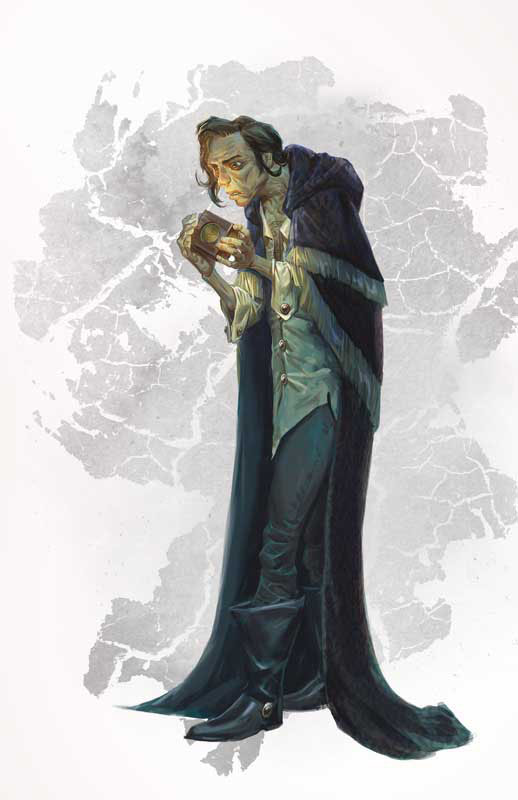 Thurstwell’s imp spies can be found throughout the Vanthampur Investigations. As previously discussed, you’ll want him to take meaningful action in response to what his imps see. Options include:
Thurstwell’s imp spies can be found throughout the Vanthampur Investigations. As previously discussed, you’ll want him to take meaningful action in response to what his imps see. Options include:
- He sends an imp to barter with the PCs. (He’d probably like them to kill one or both of his brothers. If he’s feeling daring, or if the PCs have already succeeded at eliminating his brothers, he might even ask them to kill his mother so that he can take her place at the head of the family. If the PCs were to go all in on this, you could have an alternate trajectory where, the job done, he asks them to take the infernal puzzlebox to Candlekeep and have it opened.)
- He sends a murder squad of Dead Three Cultists (Descent Into Avernus, p. 28) to kill the PCs.
- He sends an abduction squad to kidnap a refugee that the PCs care about so that he can use them as leverage. (Maybe to leverage them into an alliance. Maybe to force them to back off.)
V13. THURSTWELL’S BEDROOM
In addition to the normal key entry for his room (DIA, p. 35), this room includes a work table covered in papers, books, and other items. On this table can be found:
- The infernal puzzlebox.
- The Thurstwell’s Correspondence
- A draconic mask made of bronze with a strange glaze upon its face. The mask shimmers different colors depending on the angle you look at it, varying from black to blue to green to red to white. (GM Note: This mask taken from the Tiamat relics stolen from the Hhunes, see the Dungeon of the Dead Three.)
THURSTWELL’S CORRESPONDENCE
My dear Thirsty,
It’s done. I’ve sent word to Vaaz. We’ll be rid of the oaf soon enough.
I could use more of your divinations, though. My research using Elturgard’s armorial rolls suggest that the Majerus family were quite bountiful with their loins both during and after their service to the Companion. Given how many brats they seem to have had, they were probably rutting in their saddles. It’s likely they have any number of heirs in the refugee camps, so I think it’ll be well worth your time to cast forth your seventh eye or whatever and identify them for me.
Amrik
GM NOTE: The armorial rolls identify the name, coat of arms, and date of accolade for every knight in the Order of the Companion and the Riders of Elturel. See Part 3H: Trafficking Amrik.


